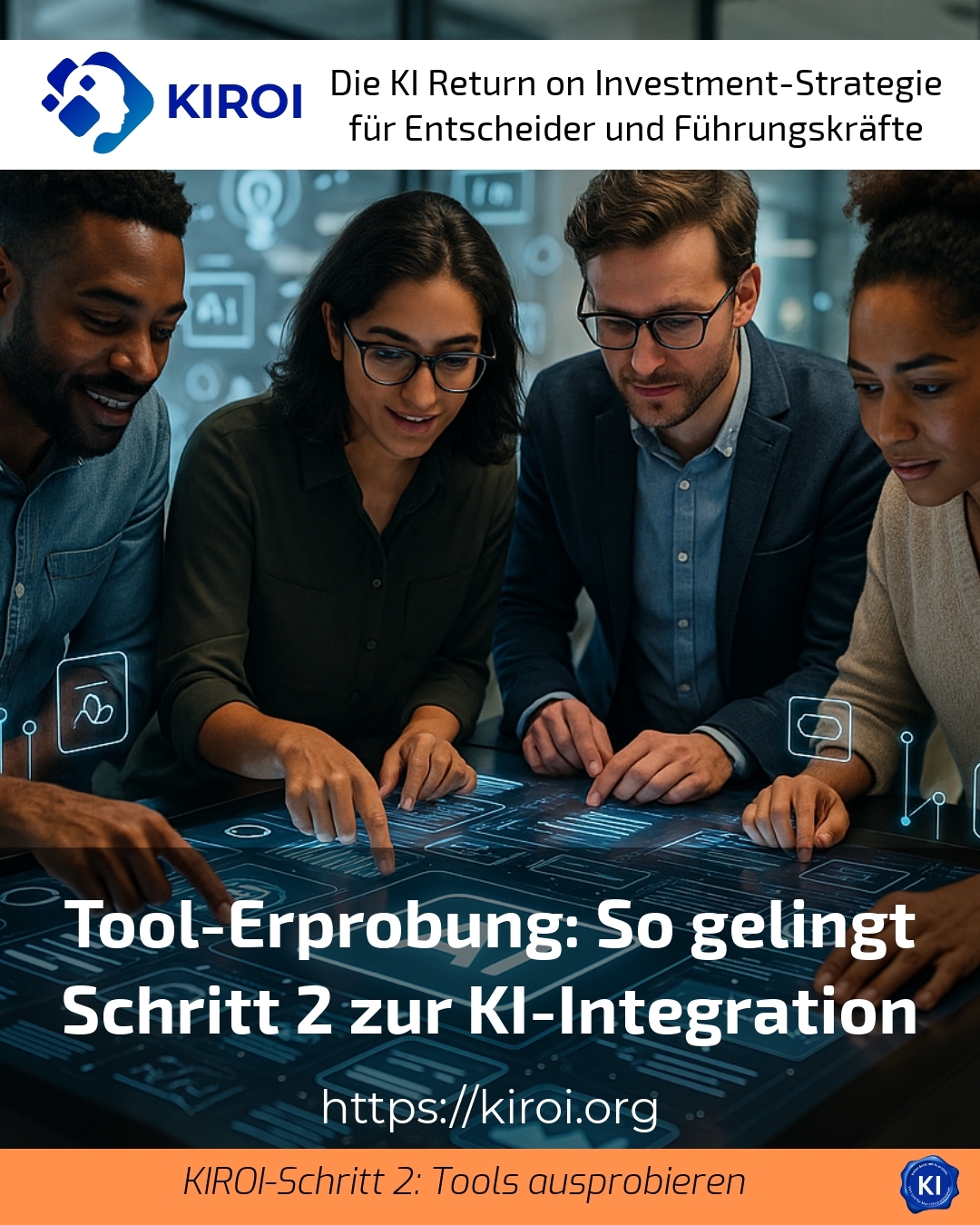Tool testing as an important step towards AI integration
Tool trialling is a key phase when companies want to implement their AI integration. Many organisations approach us with the question of how they can select the right AI tools and successfully embed them in their day-to-day operations. They want support not only to understand technical solutions, but also to test the concrete effects on processes and teams in a practical way. KIROI coaching provides support, provides strategic guidance for AI-related projects and gives impetus for effective tool trials.
Key challenges in tool testing
Clients generally report that they are initially overwhelmed by the abundance of AI tools. There are countless technical offerings for a wide variety of business areas. It is therefore important to approach tool trialling in a systematic and targeted manner. It is important to clearly define the required functions and test the tools using real use cases. In this way, weak points can be recognised early on and adjustments can be made. Tool trialling also means that employees are actively involved in order to promote acceptance and user competence.
Practical examples from various industries
In the logistics sector, tool trials often show how AI-supported systems can make demand forecasting more precise and route planning more efficient. This makes daily planning more flexible and resource-efficient. In the manufacturing industry, AI tools help with quality control and predictive maintenance of machines. Tool trialling is proving its worth here by supporting realistic work processes and thus avoiding undesirable developments. In the retail sector, the personalisation of customer offers thanks to AI is a frequently tested tool feature. Tool testing makes it possible to closely monitor and adapt the reactions of customers and the performance of the systems.
KIROI BEST PRACTICE at company XYZ (name changed due to NDA contract)
The tool trial began with a small test group from various departments who put specific AI modules through their paces. Valuable feedback was collected on user-friendliness and integration. This knowledge flowed directly into the adaptation of the implementation strategy. This meant that potential conflicts with existing IT systems could be prevented at an early stage and the rollout could be organised more efficiently.
KIROI BEST PRACTICE at ABC (name changed due to NDA contract)
In a service company, the tool was initially trialled in processes with a high routine content. Here, AI assistance systems were able to reduce waking times and improve standardised processes. The accompanying analysis also showed what further potential there was for automation. On this basis, the coaching was used to prepare the next iteration of AI integration.
KIROI BEST PRACTICE at the DEF organisation (name changed due to NDA contract)
The tool was trialled in several phases with increasing complexity. Starting in the back office with automated document capture, AI applications were successively tested in customer service. This enabled the organisation to manage the development step by step and prepare employees for new technologies in a targeted manner. The coaching team provided valuable impetus to remove technical and cultural barriers.
Key success factors for tool trialling
To ensure that tool testing is successful, companies should define clear criteria for the selection and evaluation of AI tools. It is also advisable to carry out the tests with real data and under real working conditions. Another important point is to ensure open communication between specialist departments, IT and managers. In this way, companies promote acceptance and can more easily make adjustments based on the knowledge gained. The importance of flexible and accompanying support through coaching such as the KIROI system is particularly evident when trialling tools.
My analysis
Tool trialling is indispensable on the path to successful AI integration. It helps to reduce uncertainties and gain practical insights for further development. Companies that plan this step carefully and have it actively supported are better equipped to implement AI projects sustainably. It is therefore advisable to see tool testing as a dynamic process that combines technical innovation and organisational adaptation.
Further links from the text above:
[1] Master step 2 in the KIROI system with these AI tools
For more information and if you have any questions, please contact
Tool testing or read more blog posts on the topic
Tool testing here.















